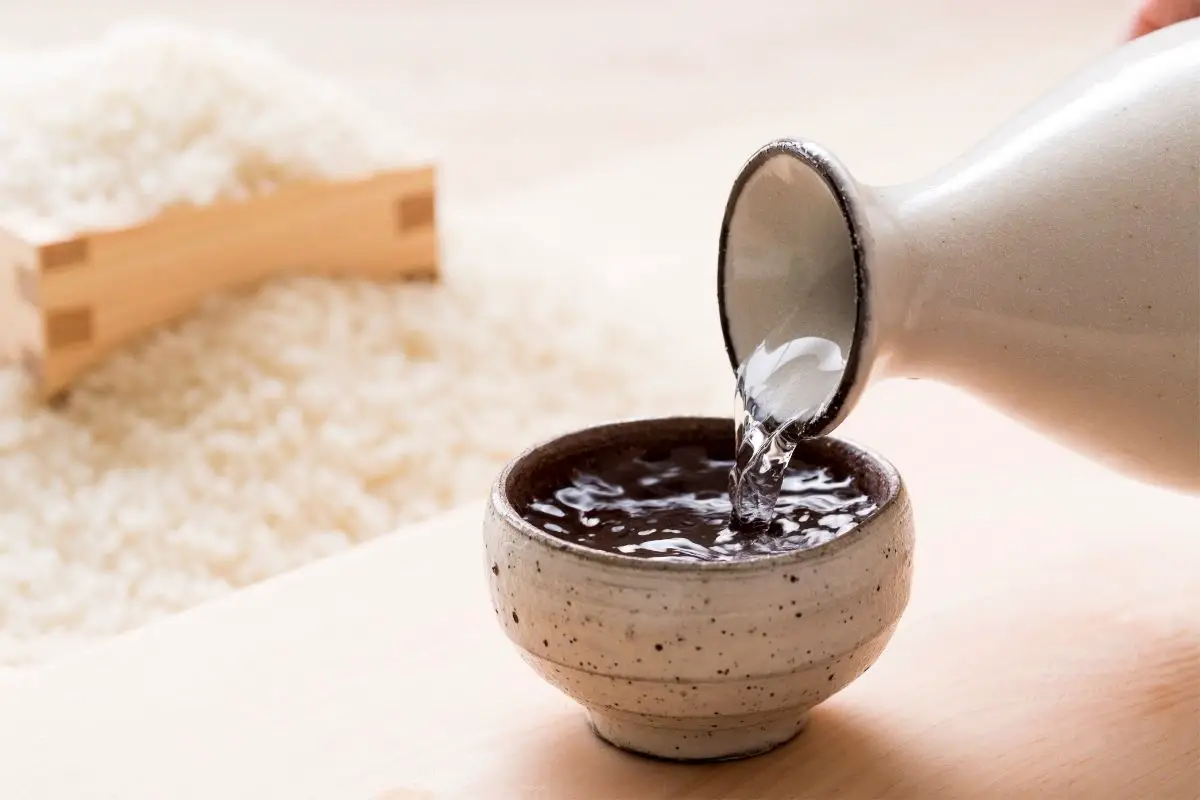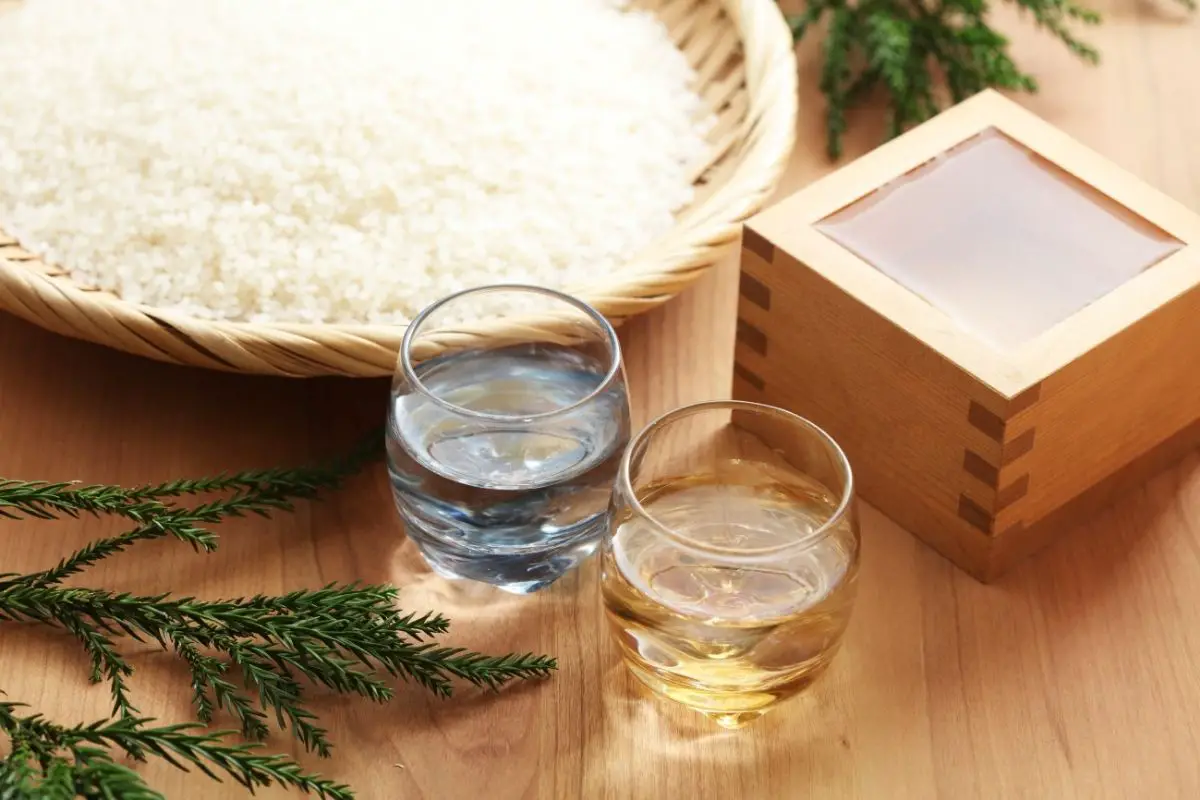Ever wondered how to make Sake? Sake is a traditional wine from Japan made from fermented rice, and it is fairly easy to make at home for anyone with a desire for a little trial and error.
Sake is brewed like a beer, but the starch is converted into sugar and fermented into alcohol. Sake is different from beer because it is brewed differently, more like wine.
Sake is made by mixing water with rice and steeping it overnight. Then the mixture is heated up and left to ferment. After this process, the mixture is cooled down and filtered before being bottled or poured into cups.

Sake was invented by the Chinese thousands of years ago. In Japan, sake became popular during the Heian period (794-1185). During this time, sake was used as a ceremonial drink.
After that, sake became the national beverage of Japan, and now it’s an important part of Japanese culture.
Sake is usually served warm during a traditional ceremony. You should drink it chilled or at room temperature. During the ceremony, you sip sake from a small porcelain cup. The type of nihonshu you have will determine the serving temperature.
It is traditionally served chilled, but some people prefer warm sake. Sake is generally drunk as part of a meal, although it can also be enjoyed on its own.
What You Need to Make Sake
Sake is made by fermenting rice with yeast. Ingredients include 2 gallons of cold water, 10 pounds of short-grained rice, 40 ounces of koji kin.
Sake yeasts break down sugar for fermentation. Yeast nutrients help the yeast grow.
Epsom salt helps prevent the growth of bacteria. Morton salt substitute prevents the growth of bacteria. You can use this mixture to make your own sake.
Sake is made by fermenting rice or other grains with water and koji (a fungus).
As the process continues, alcohol is produced. When the alcohol reaches about 15% ABV, the sake is ready to be served. The most important part of making sake is using the right kind of yeast. This is called koji.
Kojis are fungi that are used to help break down starches into sugars. There are many kinds of kojis. Some are more effective than others. In order to get the best results, you need to use the right kind of koji.
Wyeast WY 3134 Sake 9 Yeast is the best koji available. It is also known as Japanese Rice Wine Yeast. You can buy this koji online.
Sake should be stored in a cool place. You can put it in a refrigerator or freezer if you want.
You’ll need a home brew kit, steamer, gallon glass jars, and fruit presses.
Sake Brewing at Home
Brewing your own sake might seem like a very complicated and daunting process, but it’s really not.
Making sake is pretty simple to do. Sake brewing is broken down into three main steps: Moto, Moromi, and Yodan. These steps are done over a period of six weeks for a standard amount.
Before starting, clean and sanitize all of your equipment. Small amounts of contamination on any equipment will affect yeast production during brewing. This will greatly affect beer quality.
Moromi Mash
Moro means to rest or pause. Moromi is the main fermentation that takes place over 4 days. The first batch of rice and koji should be added gradually and in smaller amounts. This way, the yeasts can fully do their job.
Secondary Clarifying Maturing
Nigorizake is a Japanese alcoholic beverage made by adding rice or barley malt to sake.
The alcohol content is about 18-22% and diluted with water. Secondary fermenters are kept at 50 °F /10 °C. Sake is fermented for 3 weeks before being bottled. Cleanliness is important.
Sake is made by fermenting rice and adding water. After fermentation, the rice is filtered using activated charcoal. This process removes impurities and gives the sake a clear color.

Bentonite is used as an anti-caking agent in brewing beer. You can add this ingredient to rice wine to make it clearer.
Add 1.5 teaspoons of this ingredient to 8 ounces of hot water. Whisk the mixture until you get a smooth consistency. Then divide the mixture equally among your containers and gently shake them.
Bentonite is a substance used to clarify wine or sake. It is made up of clay particles suspended in water.
When the clay particles settle out of the liquid, the sediment is removed. This allows the remaining liquid to be seen more easily.
In order to make this happen, the solution must first be put into a container with holes in it. Then the container is shaken vigorously until the clay particles settle out.
Once the particles have settled, the liquid is poured off and replaced by a new liquid. The process is repeated several times until the desired clarity is achieved.
You need to pasteurize your sake before drinking it. Heat the water until it reaches 140 degrees Fahrenheit (60 Celsius). Once you reach that temperature, remove the jar and cap it tightly.
Serving Sake
Sake is a traditional Japanese alcoholic beverage, sometimes referred to as rice wine. It is typically served cold, but may also be served either warm or hot. It is traditionally served in a ceramic vessel called a sake cup, which is kept warm by being immersed in a bowl filled with hot water.
Glasses are usually small in size, but they’re also useful. You should never pour your own drink because it’s considered rude. When you’re drinking with other people, you’ll need to wait until someone pours you a glass.
Then, you’ll be the one to fill everyone else’s glasses too.
There are many different serving sets available for specific occasions. Sake is stored in giant wooden caskets.
Some are served to gods as an offering. Some are opened with a hammer during festivals as a celebration ritual. These days, sake is used in different alcoholic cocktails, one of the most common ones being the sake bombs.
Things to Remember When Making Sake at Home
Sake must be stored in a dark, cool place. When storing it, make sure that the container is clean and sanitized. A room thermometer should be placed inside the bottle to monitor the temperature.
A cold beverage should be served chilled. When opened, it should be consumed within 2-3 hours. Refrigeration helps preserve the flavor of the drink.
Sake is a type of Japanese rice wine. It is made by fermenting rice grains. After fermentation, the rice wine is aged in wooden barrels for several months. The process takes about five years before the sake is ready to be served.
When the rice wine is exposed to air, it loses its best taste.
How to Make Sake – Conclusion
Sake-making is a long process. It takes time to make the rice, ferment it, and then distill it into alcohol.
In the end, the results are worth it. People enjoy drinking homemade sake because it tastes better than store-bought sake. It can be used as a cooking ingredient and even as a gift.
- Vevor Still Instructions - June 12, 2023
- Best Proofing Parrots For Home Distilling - February 1, 2023
- What Is A Porter Beer? - June 12, 2022
